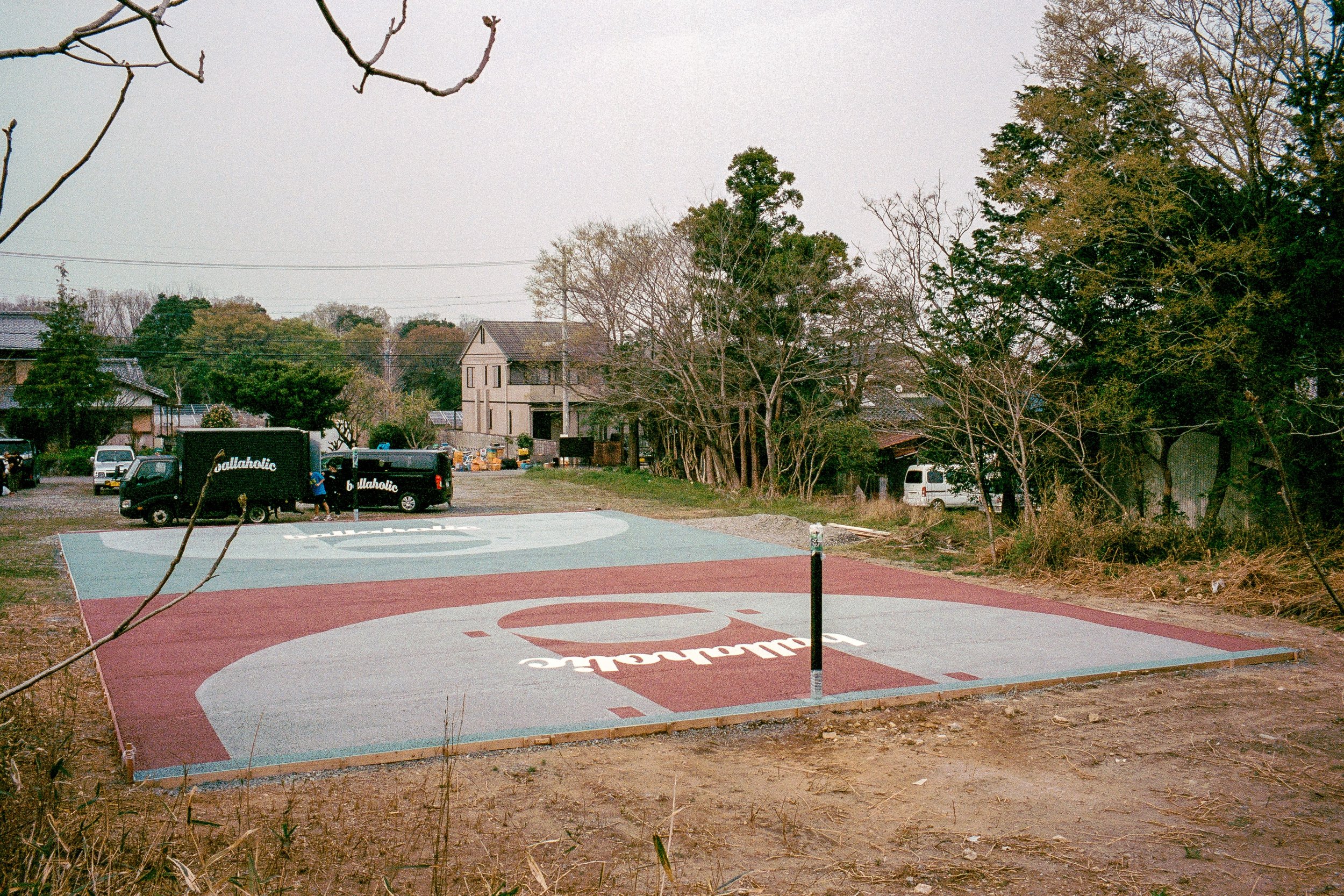Yoshikazu ‘TANA’ Tanamachi
“Basketball is not a popular sport in Japan”. You’ve probably heard this statement and it’s a matter of fact that the number of playgrounds in the world’s most populous metropolitan area is ridiculously low to persuade the 32.4 million Tokyoites to pick up a ball and dribble. However, in the last decade, Tokyo and the other 46 Nipponic prefectures have experienced an unprecedented rise of interest around the Game. A culture driven by an avant-garde hoop visionary, Yoshikazu ‘TANA’ Tanamachi, who set a goal of playing anywhere with style, built a vision around it, and became the creative director of ballaholic to expand the infinite boundaries of a pure lifestyle.
Words by Gianmarco Pacione
TANA and Akiho ‘JIZO’ Ogawa, one of the eighteen basketball addicts working alongside him, spent some quality time talking with Overseas in the usual Kenkyo Japanese style, made of politeness and respectful commitment to our project..
Tell us about your brand and the way you approached the last fifteen months.
ballaholic is an apparel line founded in 2012 and we sponsor an iconic basketball league called SOMECITY in several Japanese cities since Christmas day of 2007, which will finally be back this month. Our brand is very centered in streetball and when gyms closed due to COVID, outdoor playgrounds became the destination for more kids than ever. Some outdoor courts have tape on the rims, but their accessibility depends on the prefecture – for instance in Tokyo we got out of lockdown at the beginning of April and from that moment on we’re allowed to play outside. You need to know that in Japan we don’t have many basketball courts, so another business we’ve just started to tackle it’s building and designing new courts.
How does the Japanese basketball culture look like and how did you impact it?
When we started there was already a kind of basketball culture in Japan, but kids playing basketball had to play for the school teams or not play at all. The main problem back then was a lack of club teams, recreational leagues, pick-up basketball as well as of basketball courts. Moreover, school basketball activities (bukatsu) usually have strict rules and are inflexible in terms of playing style.
We think streetball is for everybody who wants to play, and we brought this new mindset into the culture. TANA had the ambition to make clothes for ballers to look and feel cool, therefore he started creating super simple t-shirts with the ballaholic logo. A phrase that we use as our mantra is “ALLDAY, ALLNIGHT, EVERYWHERE, ANYWHERE” which translates into apparel lines that people can casually wear to be always ready to play, whenever there’s a hoop nearby them. That means incorporating basketball into your lifestyle.
What’s the main source of inspiration for the ballaholic spirit?
I believe the main inspiration for any streetball brand must be the AND1 Mixtape tours (are you feeling it too?) and New York playgrounds. We wanted to bring that spirit and culture to Japan but here courts are located in public par- ks which impose severe limitations that won’t let us use them for private tournaments. That’s why we went bold and decided to rent out a nightclub in Kawasaki, a live music venue that has hosted artists like Lenny Kravitz, Nirvana, Red Hot Chili Peppers and Beastie Boys, where we need to adapt the dimensions and play half-court 3vs3 games. In other prefectures, we have collaborators running SOMECITY tournaments as franchises and they can do it in whatever court they find. We communicate with local people often to support them and we’re usually available at the events to help them out, on top of providing jerseys. It’s a ritual that, before the pandemic, was repeated any given weekend!
How did other cultures influence the way Japanese approach basketball on and off the court?
Once we started ballaholic we developed an international network, initially building a subsidiary in Hong Kong, holding SOMECITY in China, and collaborating with European institutions like Pigalle. That helped us and our community to see basketball culture through different lenses. In terms of playing style, Japanese people are normally short and, as streetball lovers, ballhandling is our main skill. We’re attracted by players with ‘beautiful handling’ and we look out for them in any region of the globe.
Any future ballaholic plan or collaboration you can already unveil?
In the last ten years our business has been focused on establishing the brand in Japan, but we’re finally trying to become more global. We’re setting a structure to be more agile around the world. Later this year we’ll launch a collaboration with someone in Europe and we’re planning exclusive European drops. We already have two websites: one for Japan and one for global customers, as well as the @ballaholic_official Instagram page that we use to communicate our products to an international audience. We’ve also recently created @ballaholic_us which will be mainly dedicated to the English-speaking audience.
Rui Hachimura and Yuta Watanabe are beloved players. What does make them so unique and what’s the missing element to foster a Japanese trend in the NBA?
What they’ve been doing is amazing. I believe a big reason for their success is that they moved to the US right after high school. When I used to watch them playing as teenagers here in Japan, I didn’t think they would have made it to the NBA. They got there because they challenged themselves to play at a higher level while they were still fairly young, and continued to work hard. The level of basketball around the world is growing, so it’s vital that Japanese players keep up with that pace and experience high-level basketball by going overseas at an early stage.
Credits: Yoshikazu ‘TANA’ Tanamachi and Akiho ‘JIZO’ Ogawa








